UX in Ecommerce: 20 Years of UX Design

UX Design has evolved from a “nice to have” asset for a business to a necessary component, particularly where ecommerce is concerned.
The advances in technology in the last ten years alone has significantly contributed to what UX Design can offer for ecommerce. No one could have dreamt that in 2019, we would be using AI to buy products or that the checkout process could be as simple as just one click of a button.
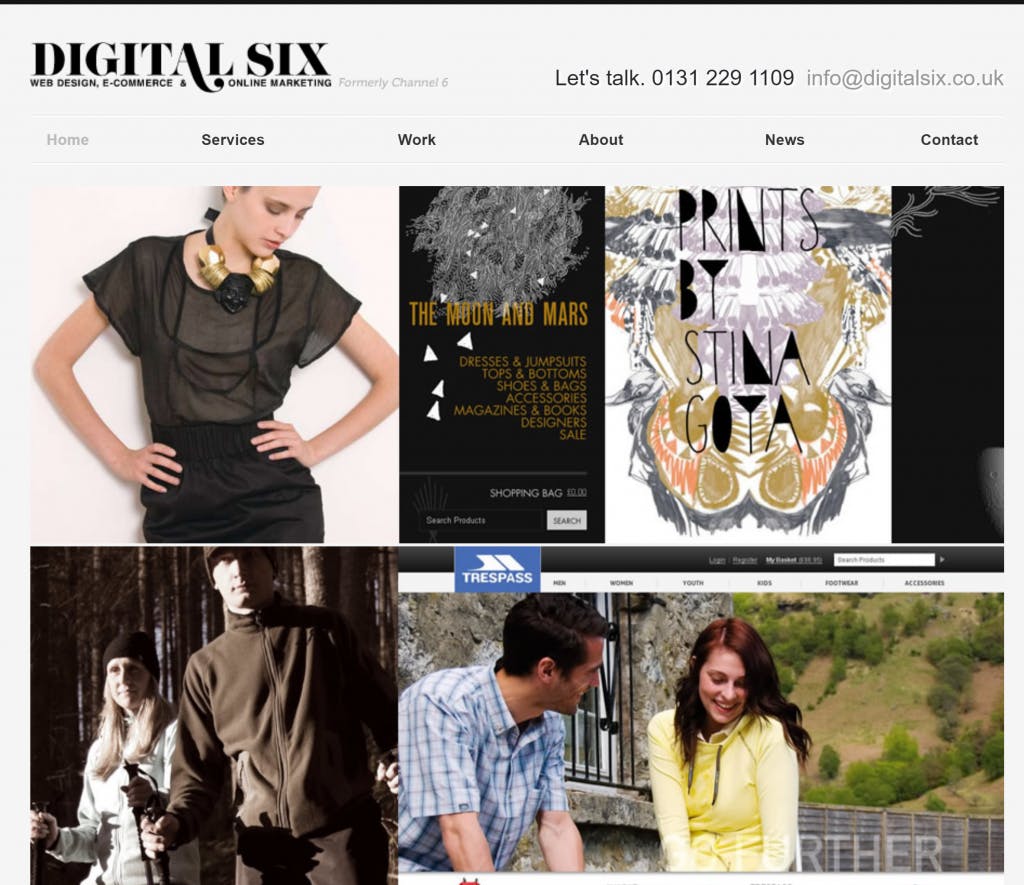
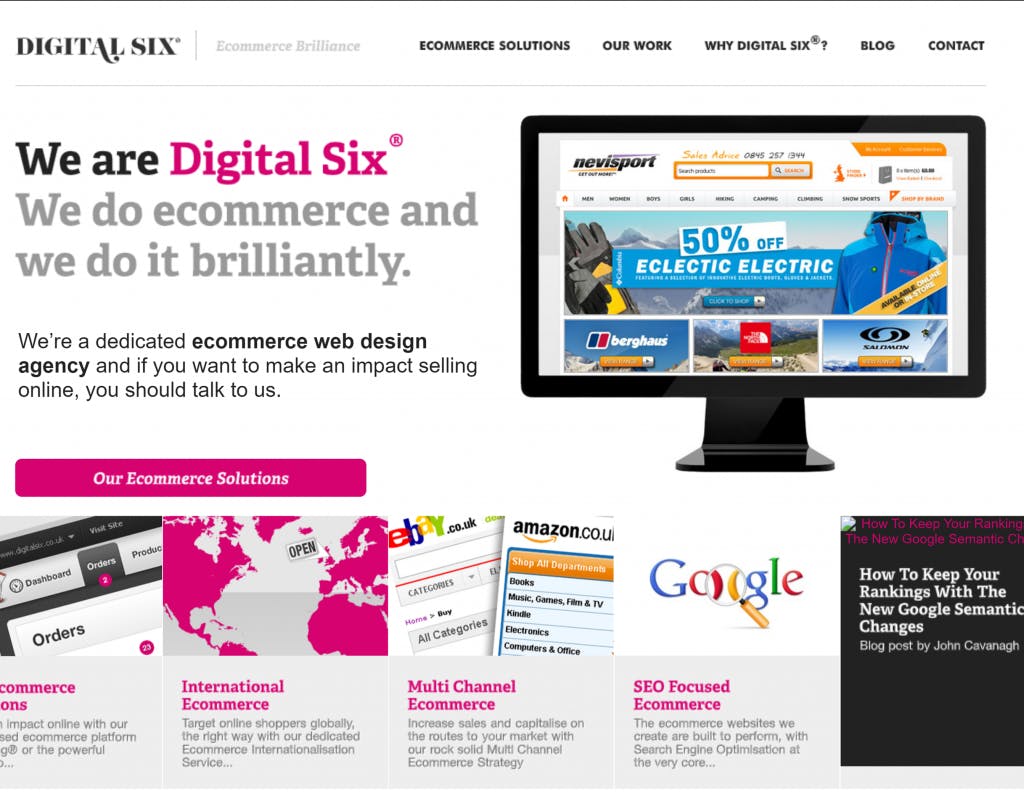
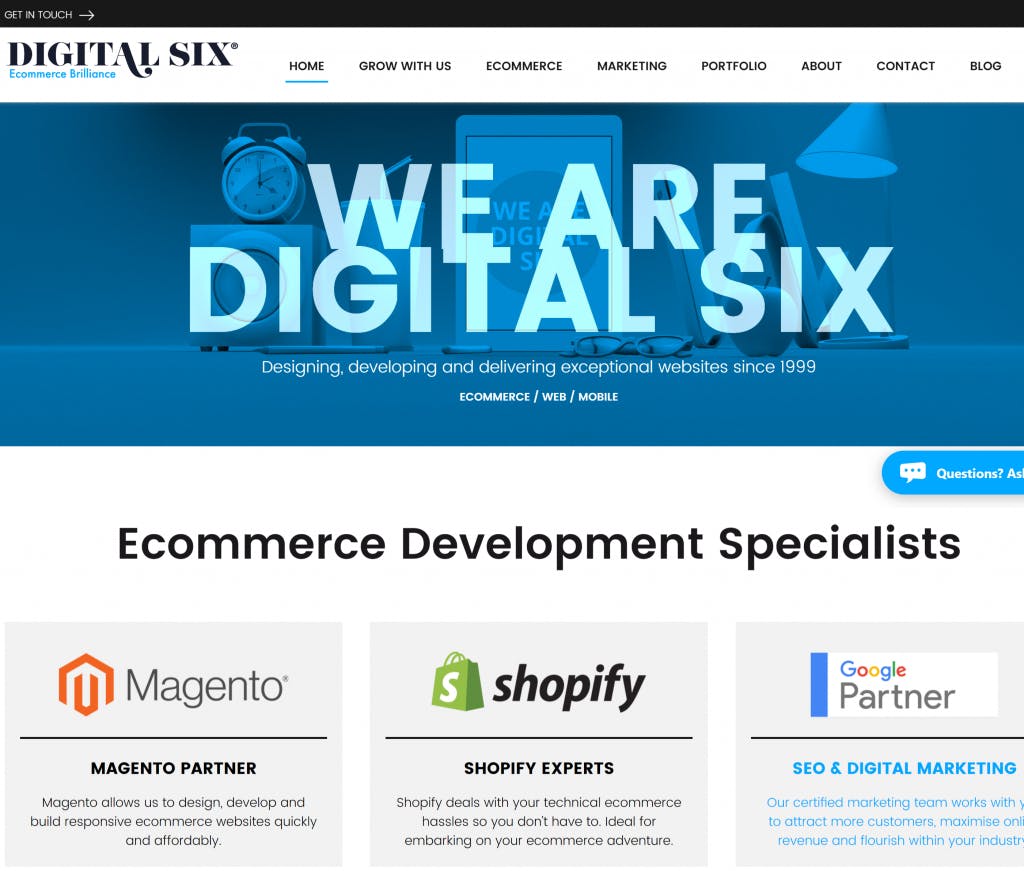
Beyond 20 Years
UX Design existed long before the internet did. But it wasn’t called that until 1995 when Donald Norman created the term and became the world’s first User Experience Architect at Apple Inc. In 4000BC the Chinese had Feng Shui, and in 500BC, there is evidence to suggest that the Ancient Greeks had an understanding of ergonomics.
The theories and learnings upon which UX is based are largely psychologies that predate the internet and prove that humans require things to work in certain ways to avoid frustration. For the common user, the early days of the internet were not as straightforward and simple as they are today.
Where did UX Design for Ecommerce Begin?
This is a tricky question to answer! Technically ecommerce was invented in 1979, but actual ease in functionality didn’t come about until the 90’s, roughly when Amazon was born.
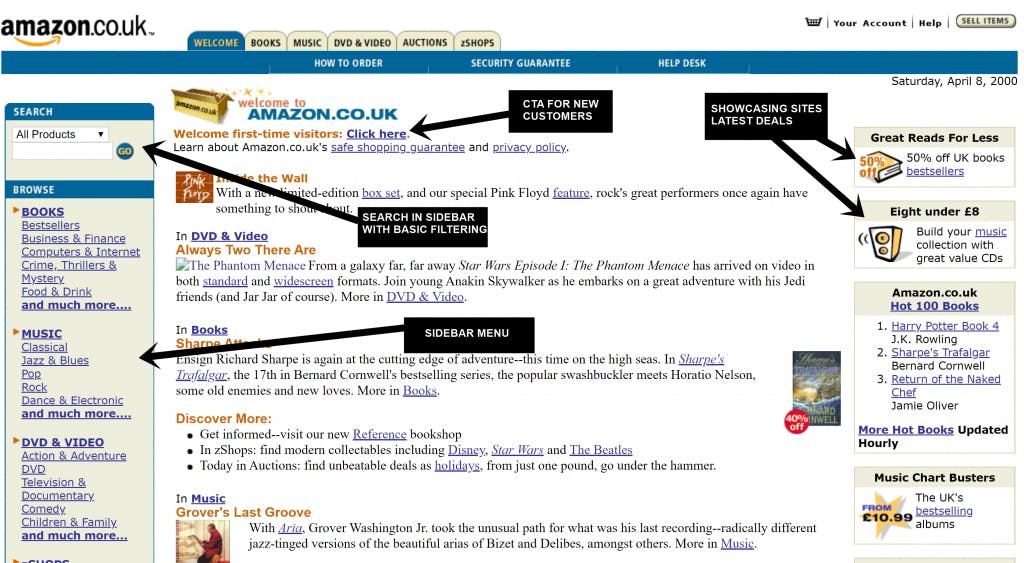
Amazon started life as an online bookseller in 1995. It was one of the first ecommerce sites to introduce customer reviews on products, something which is now standard practice in the world of ecommerce.
Amazon is now a giant and is often cited as being one of the most influential sites with respect to UX Design. This is due to things like the product reviews, one-click order, free delivery and it’s massive stock which is easily navigable through nested categories and multi-access search functions.
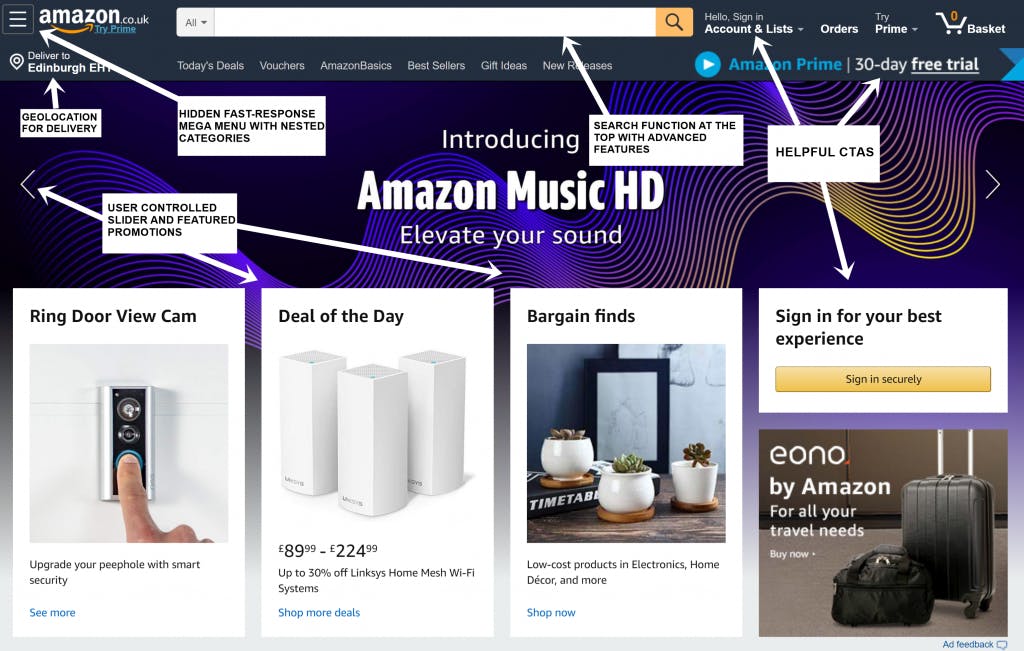
Despite being a huge competitor to any ecommerce business, Amazon isn’t the be-all and end-all.
From 1999 to around 2010, UX Design was still an emerging concept, especially for Ecommerce. The internet as a whole was still considered by most businesses as a “fad” and not worth the investment over brick and mortar stores. This was due to the lack of technology available and accessibility, and the uncertainty (at the time) of how secure shopping online actually is.
However, the 2010’s brought about huge growth in ecommerce.
The 2010’s and the Emergence of Responsive Design
From 2010 onwards, the sudden importance of UX Design increased with the evolution of technology. With sophisticated platforms like Magento and Shopify being more readily available, ecommerce itself was becoming more relevant and popular, with more consumers shopping online.
Through that came an increase in competition! It quickly became apparent that ecommerce businesses needed to stand out in the vast jungle of online shopping. UX Design grew. It became less about “making it work” and more “making it work, and making it delightful”. In essence, finding the harmonisation between form and function.
The release of the iPhone in 2007 and the release of the iPad in 2010 (which popularised the use of tablets) meant much more than just the beginning of minimalistic smartphone design but also changed the face of ecommerce and UX Design. It marked the beginning of shopping via mobile phone and the omnichannel experience that is now ecommerce. Responsive Design came out when UX Designers needed to consider how websites would look in mobile view.
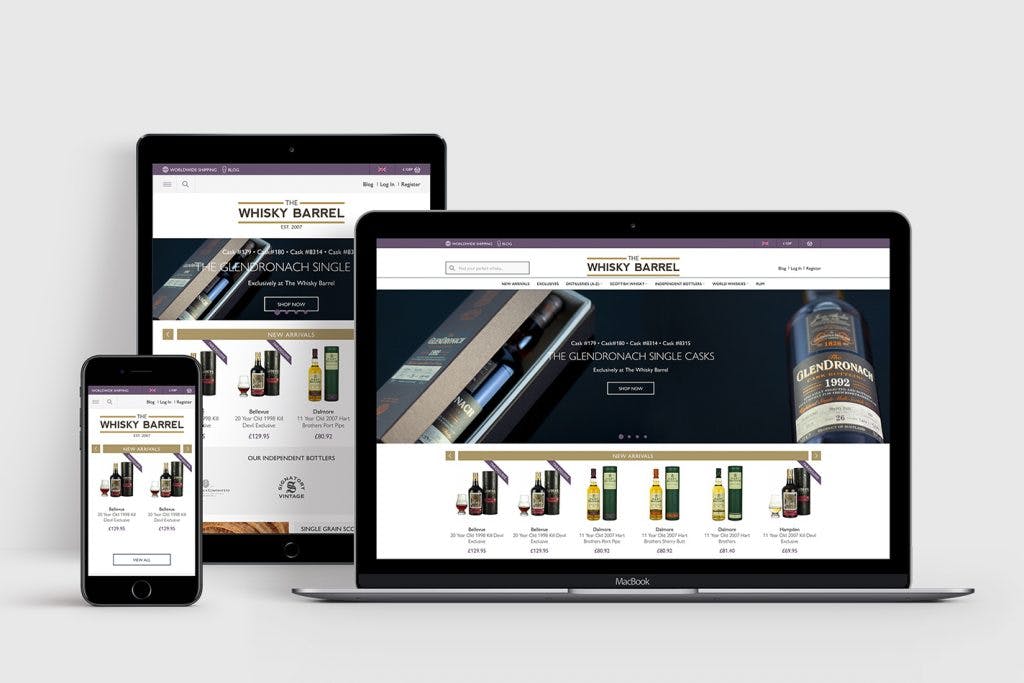
It was enough to make a webpage on a computer browser navigable and streamlined, but now focus had to be placed on a variety of different screen sizes.
Throughout the last decade, there have been quick shifts in cultures and trends to adapt to the change in the ecommerce and internet environment; there was a sudden growth in taking a “human-centred” approach to UX Design. Appealing to consumers by considering their feelings was the best way to get conversions and obtain consumer loyalty.
With tools like Google Analytics, consumer feedback and other data gathering tactics, UX Designers were able to easily identify a brand’s consumer base and create an image and service that would positively meet their expectations through Emotional Design.
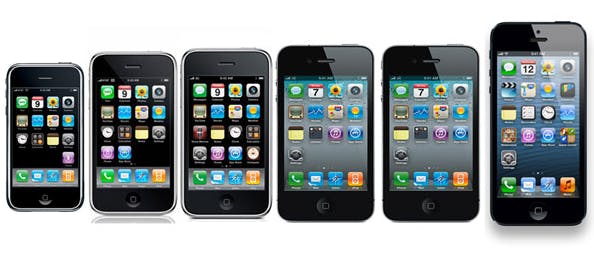
Brand imaging is a huge part of the UX Design process of a website or a product. For example, Apple Inc lead the way with the minimalistic approach with the release of the iPhone which featured a sleek design, fewer physical “buttons” than most phone and larger screens. Up until the iPhone 5, the iPhone screen size was only 3.5 inches. In 2019 with the release of the iPhone 11 Pro Max, iPhones are now available in screen sizes of 6.5 inches! With higher definition and larger displays, UX Designers have a whole lot more they can do when optimising for mobile phone screens.
The Present and the Future of UX Design
So how are things looking in the world of UX Design today? Vastly different from 1995, that’s for sure!
It is now proven that UX Design drives businesses when it comes to things like growth, revenue, decision making and conversion rates. McKinsey & Company created a system through which they tracked the design practices of 300 different companies, awarding each with a Mckinsey Design Index (MDI) score. In a comprehensive report compiled in McKinsey Quarterly, it was shown that businesses with a high MDI performed better financially.
UX Design is now being considered more seriously as data-driven strategy is put into place to ensure optimisation. It is now widespread, and in-demand, profession with UX writers being hired to write microcopy for CTAS and pop-up messages.
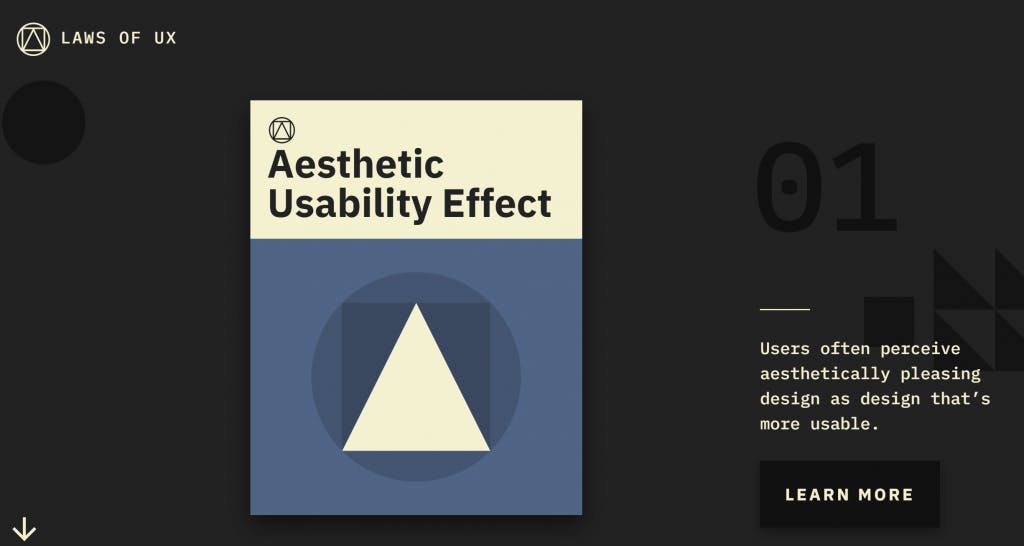
The Laws of UX are a list of complex psychologies which are now presented in a simplified way and are an excellent learning tool for UX Designers just starting. There is also the Google UX for Ecommerce Playbook which details every section of a website that should be optimised for UX. Materials and sources for UX Design are widely available and further enforces the fact that it is better understood.
For ecommerce, it’s also evolving at a fast pace. These days, UX Design processes are focusing on creating memorable experiences. People have come to expect the UX design practices that were once considered groundbreaking. For instance, a linear navigation where the user does as little work as possible to get to their desired outcome.
There is again a greater need to stand out. Memorable experiences come in the form of storytelling which is becoming a more significant factor in the way forward for UX design, particularly with ecommerce.
Website navigation is now much faster with rapid reaction menus and quick responses via search bars. Checkout systems are also now far more sophisticated and streamlined. The UK is currently the third-largest mobile ecommerce market and is expected to be worth £243.7 billion in 2022, meaning that the number of users will increase and that the focus of UX Design will still be on responsive design and device-agnostic experience. It’s also almost certain that shopping online via a mobile device will overtake desktop computers.

With the release of such products as the Amazon Echo and the Google Home, it is now possible to make purchases via voice alone. The integration of AI systems and machine learning technologies and the implementation of “conversational design” through AI capabilities is heavily predicted for the future of UX and Ecommerce, with AI gathering information about the buyer and becoming more intuitive.
Of course with the imminent PSD2 law incoming, the checkout process in Ecommerce could look vastly different in coming months. Yet another challenge for UX Designers to conquer. Even then passwords are already in decline, with two-factor security slowly becoming a second only to biometrics. The technology for this isn’t widespread and accessible enough for it to become the norm quite yet, however.
Next in the UX in Ecommerce series, we’ll be covering the beginning of the consumer journey through case studies of home/landing pages and menus and navigation on ecommerce websites.






